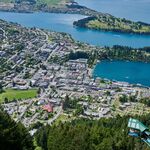nfitz
Superstar
I'm not sure what population numbers have to do with much; whether Milton doubles or quadruples does nothing for Line 5 demand. Nor do I see any differing PPHPD estimates in this TLDR full of tangents. I certainly don't see the 15,000 demand that I think you mentioned here."Some", not all, see my reference to Northern Light earlier.
I really didn't want to do this, but here is my ummm actually moment.
Regarding Line 5, I don't recall the crux of the debate on that thread being who exactly was responsible for ridership forecast, but whether or not ridership projections were accurate in planning route capacity i.e. 15k passengers per hour per direction, headways, vehicles. This considered the delays and population boom during said delays.
Without delving into the myriad changes and delays e.g. Rob Ford, city council...Yes the demand estimates from 2010 were done by TTC and Toronto, but Metrolinx was involved early on, then progressively took over until they got full control officially in 2012.
Source:
https://www.toronto.ca/legdocs/mmis/2012/cc/bgrd/backgroundfile-51449.pdf
Metrolinx was ultimately responsible on signing off on ridership forecasts used in the 2012 Eglinton case which I referenced in a previous post.
June 2012 Metrolinx Eglinton case:
https://assets.metrolinx.com/image/...etrolinx/Benefits_Case-Eglinton_Crosstown.pdf
In 2.4 (pg. 11/49) it says "The assumed employment and population forecasts used for the assessment are identified in ‘Places to Grow’ the Growth Plan for the Greater Golden Horseshoe area and is consistent with those used in the Regional Transportation Plan, The Big Move."
Big Move 2008 pdf:https://assets.metrolinx.com/image/upload/v1663240133/Documents/Metrolinx/TheBigMove_020109.pdf
The Big Move 2008 says, "The GTHA, located in southern Ontario, is Canada’s largest urban region. It is also one of Canada’s fastest growing urban regions. With a current population of over six million people, it is forecast to be home to 8.6 million people by the year 2031."
Without fully accounting for undercounted visas and overstays, the GTHA population is already estimated to be 8.3 million as of July 1, 2024 (StatsCan). The true population of the GTHA could very well be 8.6 million already when factoring in NPR undercount claimed by Benjamin Tal from CIBC (https://economics.cibccm.com/cds?id=858756bd-a8fc-4920-8ea4-e1dcd1c104d4&flag=E).
Compare that with the TTC/Toronto Crosstown Environmental Project Report from 2010: https://assets.metrolinx.com/image/upload/v1689691727/Images/Metrolinx/EA_complete.pdf
View attachment 693162
"2.1.2 Identification of Alternative Transit Technologies
The City of Toronto’s Official Plan forecasts a 270,000(10%) increase in the population of the City by 2031"
The city of Toronto has seen much more than a 270,000 increase in just the last 5 years, let alone since 2010. 2+ times more population growth has happened from 2010 to 2024 (600-700k) than what was forecast from 2010 to 2031 (270k). I don't think anyone, not even the IRCC could have predicted 15 years worth of growth in 5 years and that Toronto would reach ~3.3 million by July 2024 (StatsCan). That's why I never blamed Metrolinx for underestimating ridership and delivering less route capacity as a result.
StatsCan Population estimates:
https://www150.statcan.gc.ca/t1/tbl1/en/tv.action?pid=1710015201
But forget the ridership projection and capacity debate. The Eglinton Crosstown post 2007 was no longer just a city project.
Metrolinx was involved indirectly through planning Big Move by 2008. It was then announced as early as 2009 that Metrolinx would eventually take over. (https://stevemunro.ca/2009/07/06/queens-park-reveals-metrolinx-role/). By 2010, Metrolinx's eventual takeover was taking shape (https://www.toronto.ca/legdocs/mmis/2012/cc/bgrd/CC20_1_app3_3.pdf). By June 2011, Metrolinx had commissioned Steer Davies Gleave to update a 2009 case analysis. At the same time Mx completed an updated ridership forecast working with the TTC. All this before any construction started in late 2011. By the time tunnelling started in 2013, Metrolinx had been the sole government agency responsible for approving the new ridership forecasts, even if consultants did the work in 2011-2012.
"Eglinton-Scarborough Crosstown updated ridership forecasts jointly prepared by TTC and Metrolinx (April – June 2011)"
https://transittoronto.ca/archives/...ton-scarborough-crosstown-update-20110623.pdf
In any case, I don't see it mattering whether or not the TTC/Toronto or Metrolinx is more or less responsible for ridership projections, underestimated, overestimated, or otherwise. Many people work from home now, and subway ridership is still only 76% of pre-pandemic levels, so maybe the population boom's effect on ridership has been cancelled out. We really won't know what ridership will be like until the line actually opens. Same goes for all the other transit projects in progress like GO Expansion. nfitz, you thought the ridership projections weren't nearly as underestimated as I thought. We can agree to disagree.
TTC Ridership recent stats:
https://www.ttc.ca/transparency-and-accountability/Monthly-Corporate-Metrics
Agree to disagree sure. But twisting all sorts of technical stuff to make different conclusions than the experts come across as the same kind of conspiracy theorist nonsense as the nutters who think vaccines are harmful, or keep trying to prove to us with "science" that the USA blew up the World Trade Centre themselves.




